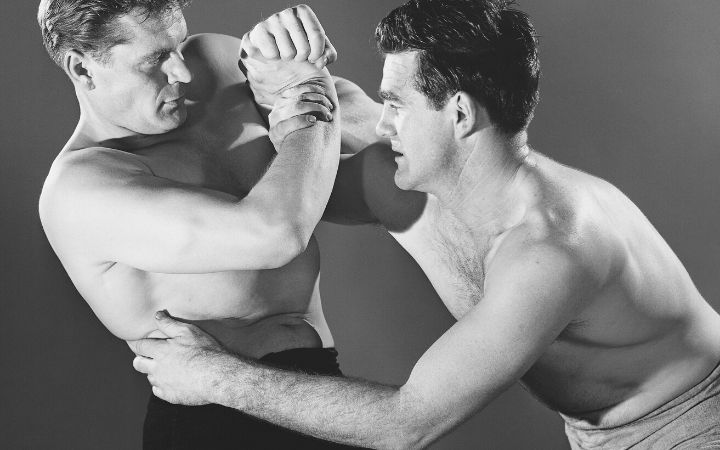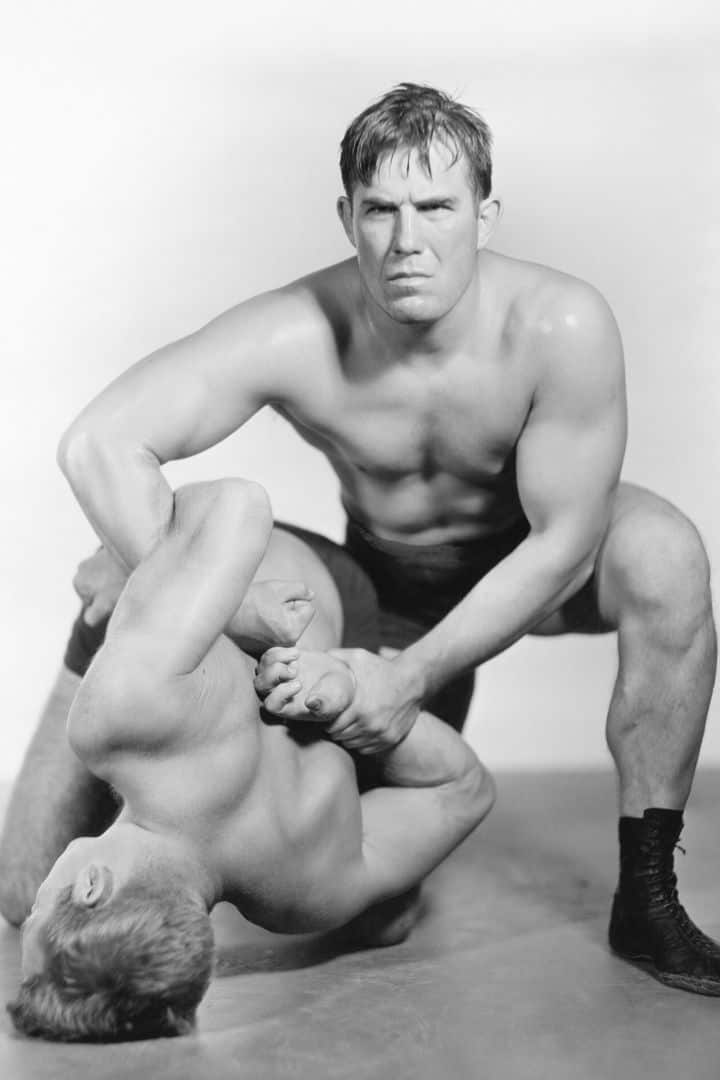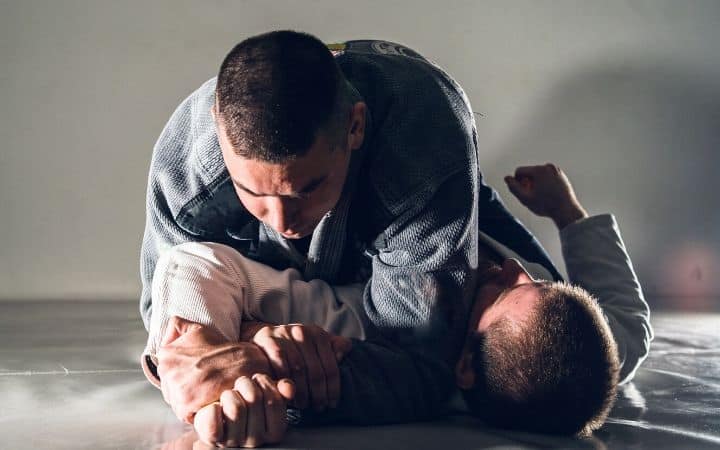What is Vale Tudo?
What is Vale Tudo and what does it represent? In short, Vale Tudo is a Brazilian system of martial arts competition that is similar to what we know as Mixed Martial Arts (MMA). Vale Tudo was more along the lines of No-Holds-Barred, anything-goes fighting rather than the sanctioned matches we’re used to seeing nowadays. It brought about highly entertaining matches and influenced the further development of Brazilian Jiu Jitsu.

Vale Tudo Meaning
In Portuguese, Vale Tudo translates to “Anything Goes.” The name says it all really, perhaps even better than the English term “No-Holds-Barred.” In the 1920s and 1930s, when Vale Tudo was just getting started, it was really a case of anything goes and the matches were much closer to a street fight than a sport.
Over the years, rules and formats emerged to help Vale Tudo grow as a sport. Despite the additional rules, Vale Tudo’s practitioners still use moves that are banned in most MMA matches, like head butts and groin strikes.
In the early days, Vale Tudo started as a carnival attraction, similar to catch wrestling in the United States. It then morphed into a sport, helped a lot by the Gracie challenges. The Gracie family members, looking to prove Brazilian Jiu Jitsu was the best martial arts around, issued challenges in newspapers to anyone that thought they could beat them.
Vale Tudo’s role in the creation of modern-day MMA is undisputed, particularly given the fact that many of the early UFC and MMA starfighters came from a Vale Tudo background.

History of the Vale Tudo
English Catch-as-a-catch-can wrestling (or catch wrestling for short) evolved in the same manner as Vale Tudo did in Brazil: with the help of carnivals. While in early English catch wrestling anyone was able to challenge a carnival fighter, Vale Tudo was more of a spectator event. The fights took place as part of circuses, where two trained fighters went all out with no rules whatsoever.
Up until 1950, Vale Tudo’s popularity rose in tandem with the rising popularity of carnivals and circuses. As the circuses traveled, so did Vale Tudo, spreading its reach.
Vale Tudo was branded as barbaric and savage, claims that MMA would face decades later. That led to the restructuring of the sport and the introduction of rules. The claims weren’t unjustified, with concussions, spinal injuries, and organ damage being common occurrences in “anything goes” fights.
In order to keep its original form alive and intact, Vale Tudo split into two currents: one that adopted the new rulesets and a second that had to go underground. During this underground period, many of the most interesting matches took place, but hardly any records of these matches remain.
In the 1990s rules were introduced to make Vale Tudo a legitimate sport. The rise of the UFC in the USA had a lot of influence on the restructuring of Vale Tudo. Organizations like the World Vale Tudo Championship (1996) and the International Vale Tudo Championship (1997) emerged. A very interesting thing about this Brazilian sport, though, is that the old-style no-rules fights still kept happening, and are probably still taking place to this day.

BJJ in Vale Tudo
Brazilian Jiu Jitsu was Vale Tudo’s biggest rival in the sport’s most popular days. The now-famous Gracie Challenges introduced many Vale Tudo fighters to the Gracies.
The Gracie Challenges were a brilliant marketing tool for the Gracies, who were far from martial arts celebrities at the time. The challenges showed that Jiu Jitsu was very effective, a small scale version of what would happen during the early days of the UFC. This got a lot of fighters to start practicing Jiu Jitsu and thus introduced more Jiu Jitsu into Vale Tudo.
Helio Gracie was the early face of BJJ in the Vale Tudo fights. He amassed an impressive record of 9W-2L-6D. A huge moment for both sports was the match between Helio Gracie and Masahiko Kimura.
The match went on for thirteen minutes before Kimura caught Helio in the submission that now bears his name. Famously, Helio did not tap and the match helped propel both BJJ and Vale Tudo further into the public eye.

Vale Tudo Rules
After the “anything goes” days, the sport version of Vale Tudo followed similar rules to those we see in MMA. Fighters wear special gloves and many techniques, like eye gouges and headbutts, have been made illegal.
Vale Tudo events are still common in Brazil. Moreover, they’re still seen as savage and uncivilized in some areas, despite the additional rules. There have been attempts to introduce the “Unified MMA rules” into the sport but organizations like the Meca World Vale Tudo and Rio Heroes still use the traditional ruleset.
Of course, apart from all the legitimate sport-style matches, there are still fights that use the old-school rules where anything goes. Needless to say, these fights are as underground as they can get.

Rickson Gracie Vale Tudo Legacy
Although Helio Gracie was the early face of BJJ in Vale Tudo, no one went on to make a bigger name for himself in the sport than Rickson Gracie.
Rickson’s legendary battle with the Brazilian pro-wrestler Casemiro “Rei Zulu ” Nascimiento Martins made him a legend of Vale Tudo. Rickson agreed to fight the much heavier opponent, choking him out for a victory. A chaotic and controversial second bout ended up in the same manner.
Rickson went on to compete outside of Brazil, enrolling in the Vale Tudo Japan event in 1994. He fought everyone from Japanese wrestlers to Wing Chun experts and even an American Kickboxer in the finals.
Rickson defeated everyone in devastating fashion, easily winning the tournament. A year later he won the tournament again though he had a harder time, especially in the opening bout against Yoshihisa Yamamoto.
Summary
Vale Tudo has an important role to play in how the martial arts world developed into what we know today. The entire concept of no-holds-barred fighting helped the Gracies popularize BJJ.
Given that it was the Gracies, and their philosophy of challenges that gave birth to the UFC and subsequently modern MMA, Vale Tudo’s legacy is unquestionable. Rorion Gracie may have even based the early UFC tournaments on his earlier experiences with Vale Tudo in Brazil. The resemblance is uncanny at least!

We care about Jiu Jitsu so much that we decided to create this page for all the people like us – that eat, breath and live the Jiu Jitsu Lifestyle! We truly hope our content will make every one of your days better, on the mat and off the mat!
